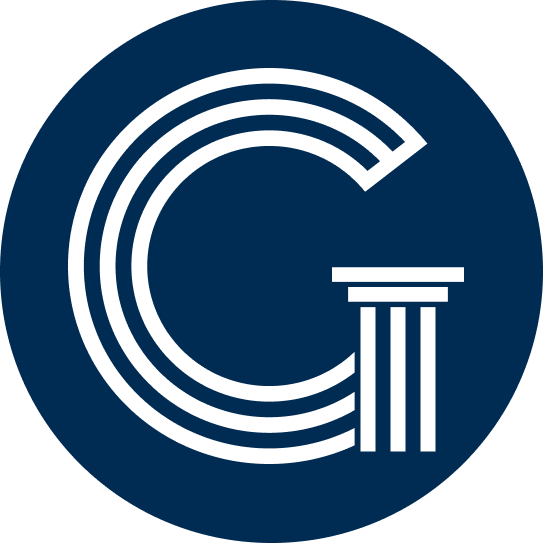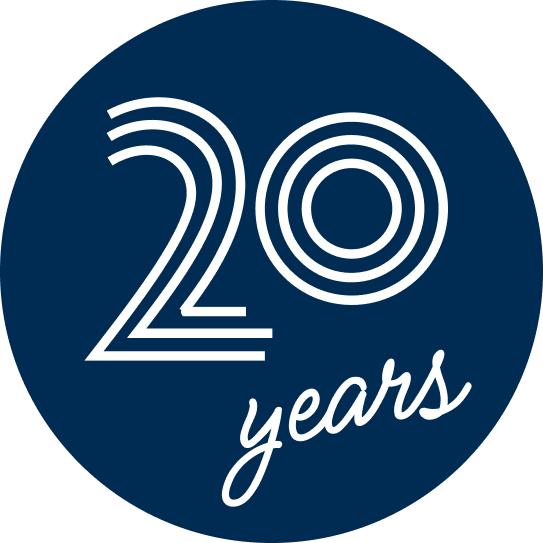- Concord Campus - (925) 687-9555
- Fresno Campus - (559) 222-1903
- Modesto Campus - (209) 521-1821
- Sacramento Campus - (916) 588-2060
- San Jose Campus - (408) 384-7050
- Van Nuys Campus - (747) 200-4567
- Concord Campus - (925) 687-9555
- Fresno Campus - (559) 222-1903
- Modesto Campus - (209) 521-1821
- Sacramento Campus - (916) 588-2060
- San Jose Campus - (408) 384-7050
- Van Nuys Campus - (747) 200-4567
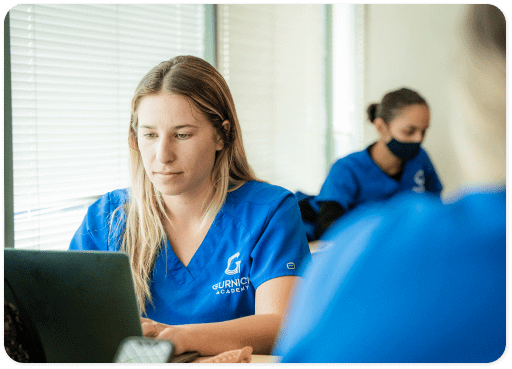
- California
- About the Program
- Program Description
- Goals and Objectives
- Educational Objectives
- Length & Schedule
- Program Delivery
- Requirements
- Admission Point System
- Career Services
- Program Outline
- Job Outlook and Salary
- Distance Education
- Accreditation and Approval
- Financial Aid
- FAQ
- Apply now
- External Resources
24 Months Program*
Distance Education
Job Placement Assistance
Veteran and Military Benefits
*90 Approved Instructional Weeks
| Student Tuition Recovery Fund (Non-Refundable) | $0.00 |
| Registration Fee (Non-Refundable) | $100.00 |
| Books (Non-Refundable, if accessed)** | $400.00 |
| Tuition Fee | $14,400.00 |
|
TOTAL PROGRAM COST* *Program Fees are subject to change |
$14,900.00 |
Alumni Grant (for Gurnick Academy of Medical Arts BSN and LVN to BSN Graduates): $1,800.00
**Students must obtain several books independently, and the cost of these books is not included in the “Books Fee.” Please refer to the school catalog’s BSN to MSN Program Textbook Distribution Disclosure.
About the M.S. in Nursing (BSN to MSN) Program
Program Mission
The Master of Science in Nursing program (BSN to MSN) aims to promote the intellectual, cultural, social, and ethical development of the learner by addressing the healthcare of diverse individuals, families, groups, communities, and populations through formal and informal teaching and learning processes.
The MSN education prepares efficient nurses for flexible leadership and critical action within complex, changing systems, including health, educational, and organizational systems. The curriculum instills nurses with vital knowledge and skills to promote health, lead change, and elevate advanced care in various roles and diverse environments.
The purpose of the Master of Science in Nursing is to achieve distinction in the graduate nursing program and to advance the mission of Gurnick Academy of Medical Arts by:
- Leading change to improve quality outcomes, building collaborative interprofessional care teams, and assuming advanced nursing practice roles that follow the regulatory and accrediting agencies.
- Actively preparing the baccalaureate student to demonstrate critical thinking skills and innovative leadership in practice, education, and research.
- Promoting public health by designing novel nursing practices and transforming evidence into practice in a diverse health setting.
- Generating awareness, assistance, and teaching of health care programs in response to the growing public health needs and acuity.
- Being a champion and advocate for nursing research and scholarship.
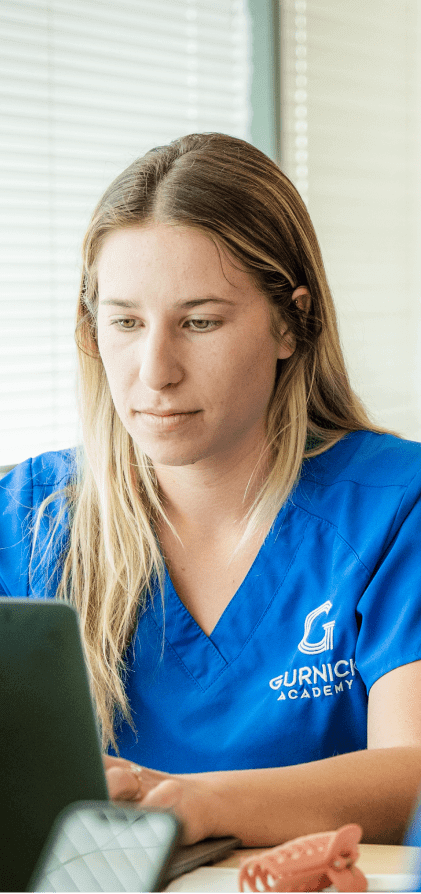

M.S. in Nursing (BSN to MSN) Program Description
The Master of Science in Nursing (BSN to MSN) program prepares students at an advanced level emphasizing nursing scholarship. Students will study healthcare policy, advanced research, healthcare informatics, leadership and management, financial resource management, curriculum development, teaching and learning process, assessment and evaluation of learning, and practicum capstone courses.
Emphasis will be placed on evidence-based practice, professional development, and scholarly practice, preparing nursing professionals with advanced theoretical skills and applied research methods.
M.S. in Nursing (BSN to MSN) Program Goals and Objectives
Providing a learning environment that celebrates cultural diversity and differences in learning styles, free of judgment and discrimination.
Graduating well-prepared Master of Science in Nursing students who demonstrate confidence in clinical behaviors and knowledge in advanced healthcare practice, meeting the essential competencies necessary to join the workforce.
Ensuring graduates have the knowledge and skills to respond to the community’s growing healthcare delivery and practice needs.
Producing well-rounded nurses that are culturally sensitive, situation-adaptive, and active advocates of the stakeholders and community it serves.
Ongoing visits to its curriculum and revising as needed, ensuring its nursing graduates can adapt to rapid healthcare delivery and practice changes.
Developing a learning platform inspiring nursing graduates to continuously pursue recognition and excellence in practice, research, and community outreach.
Encouraging nurturing partnerships with its community organizations for academic programs.
Motivating nursing graduates to seek higher education by developing a plan for faculty growth and professional development.
M.S. in Nursing (BSN to MSN) Program Terminal Educational Objectives
By the end of the graduate nursing program, the student will be able to:
- Apply theoretical and clinical concepts of health promotion and disease prevention practices, provide a safe and nurturing environment, and lead innovations in nursing practices according to nursing regulations and accrediting agencies.
- Critically appraise, analyze, and create a framework integrating didactic and clinical learning into everyday practice and leadership activities.
- Evaluate patient care practices that are evidence-based and community-driven.
- Strongly commit to nursing research by actively participating in professional organizations and advancing education.
- Demonstrate leadership by becoming a well-rounded, ethical, respectful, and well-informed nurse fully responsive to the community’s needs and acuity.
M.S. in Nursing (BSN to MSN) Program Length & Schedule
*(90 Approved Instructional Weeks)
The Master of Science in Nursing program (BSN to MSN) admission track is a six (6) semester distance education program for RNs to complete their Master of Science Degree in Nursing in two years. Each semester is 15 weeks long and covers two (2) courses. Course instructors will open a new lecture each weekday, and assignments must be submitted by specified deadlines set by the course instructors and indicated in the course syllabi.
At Gurnick Academy of Medical Arts, students receive 540 hours of didactic instruction. The two (2) practicum courses require the student to do five to six (5 – 6) hours with a preceptor for eight (8) weeks each. Students must obtain their local preceptor based on their work or residence. Gurnick Academy of Medical Arts has agreements with multiple healthcare facilities in the Bay Area, California, where students can alternatively complete their practicum.
The expected program completion time is 90 weeks, excluding holidays and vacations. The Instructor-to-Student ratio is 1:25 during lectures and 1:1 during clinical externships.
At Gurnick Academy of Medical Arts (professional courses only), students receive 540 hours of didactic instruction.
Master of Science in Nursing (BSN to MSN) Program Delivery
The instructional delivery for Gurnick Academy of Medical Arts programs is either a blended format or full-distance education.
For blended programs (A.S. in MRI, A.S. in PTA, A.S. in Nursing, A.S. in VN, A.S. in RT, A.O.S. in UT, A.O.S. in RT, A.S. in NMT, B.S. in Nursing, Dental Assistant, X-Ray Technician with Medical Assistant Skills, Medical Assistant, Vocational Nurse), clinical/practicum hours are completed at an assigned clinical site(s). At the same time, the lectures and labs may be held in a distance education format or on campus through direct classroom instruction.
The A.S. in NM, B.S. in DMI, B.S. in RTT, and BSN to MSN programs are full-distance education. Limited online and hybrid courses are available for prerequisite courses.
Requirements
- Admission Requirements
- Performance Requirements
- Graduation Requirements
Please review the following requirements: General Admission Requirements for all programs.
Applicants must:
- Meet the following admission policies of Gurnick Academy of Medical Arts: immunization, health screening, background check, and CPR Certification (See Policies of Gurnick Academy of Medical Arts in the School Catalog and “Admissions”).
- Submit a completed application for the program. It is recommended that interested applicants fill out the application with the admission advisor.
- Submit proof of current RN license.
- Submit official transcripts from an accredited institution showing obtained BSN degree with the graduation date. Copies are not accepted.
- Have a cumulative 3.0 GPA (on a 4-point scale) or higher in all college coursework.
- Submit a 3-page typed Statement of Purpose or Letter of Intent.
- Submit three (3) letters of recommendation to the nursing program. These may come from employers, immediate work supervisors, health-related facilities at which the applicant has volunteered, or faculty from previous college/university coursework. These letters or recommendations must be submitted on formal organizational stationery.
- Submit proof of health-related or community work, e.g., volunteering at health fairs, hospitals, clinics, working with the homeless, mentoring or tutoring other students, Big Brother or Big Sister. These experiences must be substantiated with a document or letter of verification on formal organizational stationery.
- Applicants will be asked to pass an interview with the Nursing Program Director or Associate Program Director in person or via Google Meet, if necessary.
- Applicants will be rank-ordered based on the following score, which includes:
- GPA in Prerequisite Courses.
- Personal Letters of Recommendation.
- Community Work.
- Health-Related Experience.
Each program has specific physical and non-physical requirements to ensure our students’ and patients’ safety and welfare. Almost all of our students (check with an admission advisor if applicable) must be able to:
- Handle stressful situations related to technical and procedural standards and patient care situations.
- Respond quickly and appropriately to emergencies using the English language.
- Communicate effectively with patients and staff in clear English in verbal and written forms.
- Read and interpret (or learn how to) patient charts.
- Tolerate strong, unpleasant odors.
- Provide physical and emotional support to the patients during procedures.
- Report clearly and legibly through progress notes in patient charts.
- Meet class standards for successful course completion.
- Collect, interpret, and integrate data about patients.
- Recognize and respond appropriately to individuals of all ages, genders, and races and from all socioeconomic, religious, and cultural backgrounds.
- Cope with heavy workloads, demanding patients, and life-threatening clinical situations.
- Recognize and respond appropriately to potentially hazardous situations.
- Demonstrate the physical and emotional capacity to work a 40-hour week during clinical rotations.
- Behave in an ethical, sound, competent, compassionate, and professional manner in the classroom and the clinic.
- Lift/carry:
- One 1 pound (0.45 kilograms)–five 5 pounds (2.27 kilograms) frequently–image receptors, lead aprons, files
- 20 pounds (9.07 kilograms)–50 pounds (22.68 kilograms) occasionally–patient transfers and patient positioning
- 50 pounds (22.68 kilograms)—70 pounds (31.75 kilograms) rarely to occasionally–patient transfers
- Stand and walk for up to eight (8) hours per day
- Carry a minimum of 20 pounds (9.07 kg) while walking a distance of 100 feet (30.48 m)
- Bend or flex the upper trunk forward up to 45 degrees and flex the lower torso into a squatting position
- Rotate the upper trunk up to 30 degrees to the right and left
- Reach a minimum of 72 inches (1.83 meters) above floor level or a full arm’s reach
- Utilize the sense of hearing to communicate with the patients and the healthcare team effectively
- Utilize the sense of vision in all levels of hospital lighting, which varies from low levels of illumination to bright light levels
- Sit in class for up to eight (8) hours per day.
- Palpate anatomical structures and handle injured body parts without causing injury to the patient.
- During exercise, give manual resistance to a patient’s arm, leg, or trunk.
- Move with adequate agility and speed to ensure patient safety.
- Walk and balance well enough to help patients walk and transfer with or without equipment while preventing injury to patients and themselves.
- Safely grasp and manipulate small objects and set dials on electrical equipment.
- Use visual, auditory, and tactile senses to observe patients and collect and interpret data.
- Respond to warning sounds, machine alarms, and calls for help.
The following requirements must be met for a student to graduate from the BSN to MSN program at Gurnick Academy of Medical Arts:
- The successful completion of all program courses and hours.
- All financial obligations, including tuition and textbook charges, have been met.
- The student must have a minimum GPA of 3.0 to graduate from the program.
Please review the following requirements: General Admission Requirements for all programs.
Applicants must:
- Meet the following admission policies of Gurnick Academy of Medical Arts: immunization, health screening, background check, and CPR Certification (See Policies of Gurnick Academy of Medical Arts in the School Catalog and “Admissions”).
- Submit a completed application for the program. It is recommended that interested applicants fill out the application with the admission advisor.
- Submit proof of current RN license.
- Submit official transcripts from an accredited institution showing obtained BSN degree with the graduation date. Copies are not accepted.
- Have a cumulative 3.0 GPA (on a 4-point scale) or higher in all college coursework.
- Submit a 3-page typed Statement of Purpose or Letter of Intent.
- Submit three (3) letters of recommendation to the nursing program. These may come from employers, immediate work supervisors, health-related facilities at which the applicant has volunteered, or faculty from previous college/university coursework. These letters or recommendations must be submitted on formal organizational stationery.
- Submit proof of health-related or community work, e.g., volunteering at health fairs, hospitals, clinics, working with the homeless, mentoring or tutoring other students, Big Brother or Big Sister. These experiences must be substantiated with a document or letter of verification on formal organizational stationery.
- Applicants will be asked to pass an interview with the Nursing Program Director or Associate Program Director in person or via Google Meet, if necessary.
- Applicants will be rank-ordered based on the following score, which includes:
- GPA in Prerequisite Courses.
- Personal Letters of Recommendation.
- Community Work.
- Health-Related Experience.
Each program has specific physical and non-physical requirements to ensure our students’ and patients’ safety and welfare. Almost all of our students (check with an admission advisor if applicable) must be able to:
- Handle stressful situations related to technical and procedural standards and patient care situations.
- Respond quickly and appropriately to emergencies using the English language.
- Communicate effectively with patients and staff in clear English in verbal and written forms.
- Read and interpret (or learn how to) patient charts.
- Tolerate strong, unpleasant odors.
- Provide physical and emotional support to the patients during procedures.
- Report clearly and legibly through progress notes in patient charts.
- Meet class standards for successful course completion.
- Collect, interpret, and integrate data about patients.
- Recognize and respond appropriately to individuals of all ages, genders, and races and from all socioeconomic, religious, and cultural backgrounds.
- Cope with heavy workloads, demanding patients, and life-threatening clinical situations.
- Recognize and respond appropriately to potentially hazardous situations.
- Demonstrate the physical and emotional capacity to work a 40-hour week during clinical rotations.
- Behave in an ethical, sound, competent, compassionate, and professional manner in the classroom and the clinic.
- Lift/carry:
- One 1 pound (0.45 kilograms)–five 5 pounds (2.27 kilograms) frequently–image receptors, lead aprons, files
- 20 pounds (9.07 kilograms)–50 pounds (22.68 kilograms) occasionally–patient transfers and patient positioning
- 50 pounds (22.68 kilograms)—70 pounds (31.75 kilograms) rarely to occasionally–patient transfers
- Stand and walk for up to eight (8) hours per day
- Carry a minimum of 20 pounds (9.07 kg) while walking a distance of 100 feet (30.48 m)
- Bend or flex the upper trunk forward up to 45 degrees and flex the lower torso into a squatting position
- Rotate the upper trunk up to 30 degrees to the right and left
- Reach a minimum of 72 inches (1.83 meters) above floor level or a full arm’s reach
- Utilize the sense of hearing to communicate with the patients and the healthcare team effectively
- Utilize the sense of vision in all levels of hospital lighting, which varies from low levels of illumination to bright light levels
- Sit in class for up to eight (8) hours per day.
- Palpate anatomical structures and handle injured body parts without causing injury to the patient.
- During exercise, give manual resistance to a patient’s arm, leg, or trunk.
- Move with adequate agility and speed to ensure patient safety.
- Walk and balance well enough to help patients walk and transfer with or without equipment while preventing injury to patients and themselves.
- Safely grasp and manipulate small objects and set dials on electrical equipment.
- Use visual, auditory, and tactile senses to observe patients and collect and interpret data.
- Respond to warning sounds, machine alarms, and calls for help.
The following requirements must be met for a student to graduate from the BSN to MSN program at Gurnick Academy of Medical Arts:
- The successful completion of all program courses and hours.
- All financial obligations, including tuition and textbook charges, have been met.
- The student must have a minimum GPA of 3.0 to graduate from the program.
M.S. in Nursing (BSN to MSN) Program Admission Point System
Applicants are deemed qualified on a point system. The highest-ranked (above a minimum) will be offered seats in the program. Gurnick Academy of Medical Arts uses the following point system to evaluate each applicant, showing the maximum achievable score.
| BSN to MSN Program - Admission Point System | Possible Points |
|---|---|
| I. Academic Achievement: Undergrad Level Courses | 20 |
| GPA | |
| • GPA 3.00-3.59 | 10 |
| • GPA of 3.60-4.00 | 20 |
| II. Post-secondary Education | 20 |
| • Baccalaureate Degree | 10 |
| • Graduate/Master's Degree | 20 |
| III. Application Essay to Nursing Program - APA Format | 10 |
| The essay will include: | |
| • Statement of purpose for enrolling into the MSN program | 2 |
| • The essential functions and role of a graduate degree nurse | 2 |
| • Preparation to become successful in the MSN program | 2 |
| • Accountability and integrity in the nursing profession | 2 |
| • Grammar | 2 |
| IV. Health Care Background | 5 |
| • One to three (1 – 3) years | 3 |
| • More than three (3) years | 5 |
| V. Personal Interview | 20 |
| • Professionalism | 4 |
| • Appearance and Demeanor | 4 |
| • Communication Skills | 4 |
| • Answering Skills | 4 |
| • Overall Impression | 4 |
| VI. Evaluation from the Office of Admissions | 5 |
| • Professionalism | 1 |
| • Timeliness | 1 |
| • Communication | 1 |
| • Compliance with the requirements | 1 |
| • Self-Motivation | 1 |
| Total Possible Points for Criterion I through Criterion VI | 80 |
Career Services

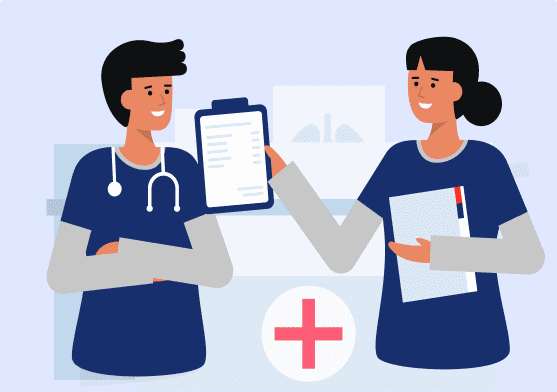




M.S. in Nursing (BSN to MSN) Program Outline
| Course Number | Course Title | Clock Hours | Semester Credit Hours |
|---|---|---|---|
| MSN 506 | Theoretical Foundations of Advanced Nursing Practice | 45.0 | 3.0 |
| MSN 508 | Future of Nursing & Healthcare Policy | 45.0 | 3.0 |
| MSN 510 | Advanced Research Methodologies and Analysis-Evidence Based Practice | 45.0 | 3.0 |
| MSN 512 | Financial Resource Management | 45.0 | 3.0 |
| MSN 514 | Leadership and Management in Nursing and Healthcare | 45.0 | 3.0 |
| MSN 516 | Advanced Healthcare Technology & Informatics | 45.0 | 3.0 |
| MSN 600 | Advanced Health Assessment, Pathophysiology, Pharmacology | 45.0 | 3.0 |
| MSN 602 | Curriculum Development | 45.0 | 3.0 |
| MSN 604 | Teaching and Learning Process and Strategies | 45.0 | 3.0 |
| MSN 605 | Nursing Practicum A - Clinical Nurse Educator | 45.0 | 3.0 |
| MSN 606 | Assessment and Evaluation of Learning | 45.0 | 3.0 |
| MSN 607 | Nursing Practicum B - Academic Nurse Educator | 45.0 | 3.0 |
| Total | 540.0 | 36.0 |
Read the BSN to MSN Program Course Descriptions.
Job Outlook and Salary
View the O*Net Online 29-1141.00 Registered Nurses, O*Net Online 29-1151.00 Nurse Anesthetists, O*Net Online 29-1161.00 Nurse Midwives, and O*Net Online 29-1171.00 Nurse Practitioners job profiles for general information about the professions. Find information about salary data for California.
Local Wages for Registered Nurses in California
Local Wages for Nurse Anesthetists in California
Local Wages for Nurse Midwives in California
Local Wages for Nurse Practitioners in California
*Gurnick Academy of Medical Arts has not determined if any programs fulfill the educational requirements for specific professional licensure or certification required for employment outside California unless identified by the program below. It is recommended that students in or planning to relocate to a state apart from where the program’s physical campus is located research any certification or employment requirements for their intended state.
Minimum Requirements for Enrolling in Distance Education
Minimum Student Skills
Students are expected to have at least the following skills before taking distance education courses:
- Basic Keyboarding competence.
- Elementary knowledge of their computer operating system.
- Basic knowledge of:
- Word processing.
- Sending and receiving emails with attachments.
- Using an internet browser and a search engine.
Minimum Hardware Requirements
- Access to a modern Windows 10 or macOS computer. Don’t hesitate to contact IT support with questions about other operating systems.
- Internet access with a high-speed broadband connection.
- Internet service provider for home access or access from work (must have before starting the course).
- Access to the distance education environment for at least ten (10) hours per week.
- Students must be able to video conference in real time. Appropriate equipment may include:
- Camera (could be built into the laptop).
- Microphone (could be built into the laptop).
Minimum Software Requirements
- Google Chrome internet browser.
- An office suite tool such as Google Docs, Microsoft Office 365, LibreOffice, or Apache Open Office.
- One or more courses may require special plug-ins to access streaming media, PDF files, or other web components.
- Antivirus software such as Microsoft Defender.
- A conferencing tool such as Google Hangouts or Zoom.
Accreditation and Approval
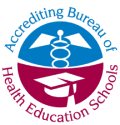
Gurnick Academy of Medical Arts holds national institutional accreditation by the Accrediting Bureau of Health Education Schools (ABHES). ABHES accreditation does not include continuing education courses.
ABHES Mailing Address:
6116 Executive Blvd., Suite 730
North Bethesda, MD 20852
ABHES Phone: 301-291-7550
ABHES Email: Info
ABHES Website: abhes.org
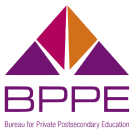
Gurnick Academy of Medical Arts is a private institution approved to operate by the California Bureau for Private Postsecondary Education. Approval to operate means the institution is compliant with the minimum standards in the California Private Postsecondary Education Act (CPPEA) of 2009 (as amended) and Division 7.5 of Title 5 of the California Code of Regulations. CPPEA governs the Bureau for Private Postsecondary Education.
The Office of Student Assistance and Relief is available to support prospective students, current students, or past students of private postsecondary educational institutions in making informed decisions, understanding their rights, and navigating available services and relief options. The office may be reached by calling (888) 370- 7589, option #5, or by visiting osar.bppe.ca.gov.
BPPE Mailing Address:
1747 N. Market Blvd., Suite 225
Sacramento, CA 95834
BPPE Phone: 888-370-7589
BPPE Email: General
BPPE Website: bppe.ca.gov
Financial Aid
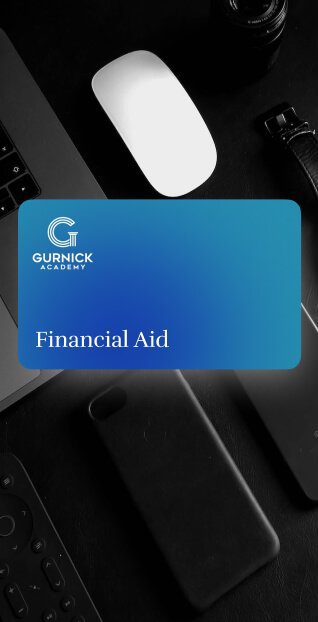
Gurnick Academy of Medical Arts aims to help every student obtain Financial Aid* to attend their chosen program. Gurnick Academy of Medical Arts participates in various federal and state student financial assistance programs.
The financial aid programs are designed to assist students with inadequate financial resources to meet their education’s total cost. Each campus has a Financial Aid Advisor who can help students with any financial aid questions.
For more information, please visit our Financial Aid page.
*for those who qualify
M.S. in Nursing (BSN to MSN) Program FAQs
Please choose from the dropdown to review a category of FAQs
-
According to the National Council of State Boards of Nursing (NCSBN), a regulating body, Advanced Practice Registered Nurses (APRNs) are Registered Nurses with additional training.
APRNs have gone beyond baccalaureate degrees and have been educated at master’s levels or higher. Additionally, they are trained within specific roles in patient populations (niche areas).
APRNs are certified to assess, diagnose, manage patient problems, order tests, and prescribe medication.”1
Citations
1 NCSBN. “APRNS in the US|NCSBN.” NCSBN, National Council of State Boards of Nursing, Inc, 2019. (Accessed September 20, 2022). -
According to the American Association of Nurse Practitioners,Ⓡ “Nurse Practitioners [NPs] practice autonomously and in coordination with healthcare professionals and other individuals. NPs provide various healthcare services, including diagnosing and managing acute, chronic, and complex health problems.
They are also most often involved in health promotion, disease prevention, health education, and counseling to individuals, families, groups, and communities. They may also serve as healthcare researchers, interdisciplinary consultants, and patient advocates.”1
Citations
1 American Association of Nurse Practitioners. “Scope of Practice for Nurse Practitioners.” American Association of Nurse Practitioners, AANP Website, 2019. (Accessed Sept.22, 2022). -
Gurnick Academy of Medical Arts’ Nursing School offers the following paths to completion:
- Bachelor of Science in Nursing (BSN) to Master of Science in Nursing (MSN) Program = 24 months.*
- General or Full Bachelor of Science in Nursing (BSN) Program = 32 months.†
- Licensed Vocational Nurse to Bachelor of Science in Nursing (BSN) Advanced Placement = 15 months.‡
- Registered Nurse to Bachelor of Science in Nursing Advanced Placement Program = 12 months.§
*90 Indicates Approved Instructional Weeks
†120 Indicates Approved Instructional Weeks
‡63 Indicates Approved Instructional Weeks
§45 Indicates Approved Instructional Weeks -
- A Registered Nurse (RN) with a Bachelor of Science in Nursing = (BSN)
- A Registered Nurse (RN) with a Master of Science in Nursing = (MSN)
According to NursingProcess.org, the primary difference between the two degrees is that a BSN program is only a bachelor’s level program.
By contrast, the MSN program combines baccalaureate education with graduate training, resulting in a master’s. Further, the MSN trains one for a specific nursing concentration.1
Citations
1 Monroe, BSN, RN, Julie. “RN to BSN vs. RN to MSN—Which Degree Is Better?” Www.nursingprocess.org, NursingProcess.org. (Accessed September 20, 2022). -
Many pathways exist for the MSN pathway. There are also programs for entry into the MSN program which don’t require a BSN.1
According to the Nursing License Map, “You don’t need a Bachelor of Science in Nursing (BSN) or nursing background to become a Nurse Practitioner. However, you will need an advanced or graduate degree to become licensed as a Nurse Practitioner.
There are Registered Nurse (RN) to Master of Science in Nursing (MSN) programs as well as direct-entry MSN programs that don’t require a BSN.”1
Citations
1^a, b “How to Become a Nurse Practitioner Without a BSN.” Nursing License Map, 2U, Inc., Aug. 2020. (Accessed September 20, 2022). -
The BSN is a bachelor’s degree, while the MSN is a master’s. Training with a BSN program stresses bedside and patient care, while MSN education stresses management and leadership.
BSN programs represent bachelorette and undergraduate-level training. In contrast, MSN programs are graduate-level education.
BSN programs provide overall well-rounded foundations in nursing. In contrast, MSN programs concentrate on specific populations and healthcare specialties.
-
To have information sent to you or a school representative contact you, fill out our online contact form here. Or call us at 1-877-GURNICK.
-
The first step is to submit an online application.
-
Applicants should follow the general requirements for entry into Gurnick Academy of Medical Arts. These can be found at the General Requirements for Admissions link.
Applicants must:
- Meet the following admission policies of Gurnick Academy of Medical Arts: immunization, health screening, background check, and CPR Certification. (See Policies of Gurnick Academy of Medical Arts in the School Catalog and “Admissions.”)
- Submit a completed application for the program. It is recommended that interested applicants fill out the application with an admissions advisor.
- Submit proof of current RN license.
- Submit official transcripts from an accredited institution showing the obtained BSN degree with graduation date. Copies are not accepted.
- Have a cumulative 3.0 GPA (on a 4-point scale) or higher in all college coursework.
- Submit a three-page typed Statement of Purpose or Letter of Intent.
- Submit three (3) letters of recommendation to the nursing program. These may come from employers, immediate work supervisors, health-related facilities where the applicant has volunteered, or faculty from previous college/university coursework. These letters or recommendations must be submitted using formal organizational stationery.
- Submit proof of health-related and community work, e.g., volunteering at health fairs, hospitals, or clinics, working with the homeless, mentoring or tutoring other students, Big Brother or Big Sister. These experiences must be substantiated with a document or letter of verification on formal organizational stationery.
- Applicants will be asked to pass an interview with the Nursing Program Director or Associate Program Director in person or via Google Meet, if necessary.
- Applicants will be rank ordered based on the following score, which includes:
- GPA in Prerequisite Courses;
- Personal Letters of Recommendation;
- Community Work;
- Health Related Experience.
Additionally, the following requirements must be met for a student to graduate from the BSN to the MSN at Gurnick Academy of Medical Arts:
- The successful completion of all program courses and hours.
- All financial obligations have been met, including tuition and textbook charges.
- The student must have a minimum GPA of 3.0 to graduate from the Master in Nursing Program.
-
Please find more info about the Foreign Transcript/Diploma Evaluation process here.
-
The application deadline is one week before the online orientation and one week before the semester’s official start date. Please see an advisor for the current academic calendar.
-
Please contact our Admissions Team for more information.
-
Our BSN to MSN program is 24 months long.*
*90 Indicates Approved Instructional Weeks
-
Accrediting Bureau of Health Education Schools (ABHES)
Gurnick Academy of Medical Arts holds national institutional accreditation by the Accrediting Bureau of Health Education Schools (ABHES). ABHES accreditation does not include continuing education courses.
Bureau for Private Postsecondary Education (BPPE)
Gurnick Academy of Medical Arts is a private institution approved to operate by the California Bureau for Private Postsecondary Education. Approval to operate means the institution complies with the minimum standards in the California Private Postsecondary Education Act (CPPEA) of 2009 (as amended) and Division 7.5 of Title 5 of the California Code of Regulations. CPPEA governs the Bureau for Private Postsecondary Education.
-
This is a full-time program and requires a commitment to the profession.
-
No. We currently do not offer night classes for this program.
-
To review the scheduled breaks during the school year, please see Gurnick Academy’s Addendum.
-
Please find more info about remediation in our Catalog and Addendum.
-
There are two (2) practicums during the MSN program. Students are responsible for choosing and providing their preceptors and preceptor sites.
-
Gurnick Academy of Medical Arts participates in various federal and state student financial assistance programs.*
*Financial aid is available for those who qualify. -
Students may be able to work during the program depending on individual needs or preferences. However, this depends on the type of work, each student’s needs, work-study balances, and life schedules and commitments.
There are some guidelines for study/life balance. The Hechinger Report cites a 2018 Georgetown University study regarding students working while enrolled in higher education.
According to the report, “Students who worked had lower grades and were more likely to drop out” than those who did not work during their college tenure. The report states, “The risk was exceptionally high for low-income students.
Other studies seem to concur with this report. The conventional advice to students is to work under 15 hours a week if they want to finish their degrees,” says the article.1
Citations
1 Barshay, Jill. “Working in College Interferes With Studies But Boosts Adult Earnings.” The Hechinger Report. June 17, 2019. (Accessed. June 21, 2022).
-
The Master of Science in Nursing (MSN) program provides master’s graduate-level degrees for those successfully passing this program and who have met all school requirements.
-
There is no licensure exam for MSN-level graduates.
-
We have a dedicated Career Services department that may assist with job placements for all students who complete the program. However, we cannot guarantee employment.
-
According to the US Bureau of Labor Statistics, projected employment growth for nurses with master’s degrees to be upward of 40 percent between 2021–2031.1
Citations
1 Bureau of Labor Statistics, US Department of Labor, Occupational Outlook Handbook, Nurse Anesthetists, Nurse Midwives, and Nurse Practitioners. (Accessed September 13, 2022). -
“Certain specialty areas, such as critical care and emergency room work, may contribute to nursing burnout. The amount of patient interaction is also something to consider.
RN positions involve extensive patient care, while master’s-level nursing degrees may open more doors to administrative, leadership, or research jobs.”1
Citations
1 Deshaies, Shrilekha. “BSN vs. MSN Degree: Which Is the Best?|NurseJournal.org.” NurseJournal. June 3, 2020. (Accessed September 20, 2022). -
“According to the Bureau of Labor Statistics (BLS), the median salary for registered nurses totals $75,330 per year, while master’s degree-prepared advanced practice registered nurses (APRNs) earn a median annual salary of $117,760.1
“The BLS publishes projected job outlook statistics, which can also provide insight into your likelihood of getting hired. Nurses with master’s degrees can expect a 45 percent projected employment increase from 2020 to 2030.”1
Citations
1^a, b Deshaies, Shrilekha. “BSN vs. MSN Degree: Which Is the Best?|NurseJournal.org.” NurseJournal. June 3, 2020. (Accessed Sept. 20, 2022).
-
On the whole, nursing, as a vocation, receives high rankings within multiple core employment areas. So much so, US News ranked the Nurse Practitioner #1 in Best Healthcare Jobs and #2 in 100 Best Jobs, with an overall job satisfaction scorecard of 8.4 out of 10.1
Rankings were determined using an elusive mix of factors, including median salaries, growth percentages, occupational stress levels, and work-life balance.1 Additionally, the job has a mere 1.2 percent unemployment rate.1
Citations
1 ^a, b, c News, US. “Nurse Practitioner Ranks Among Best Jobs of 2019.” Usnews.com, US News and World Report, L.P., 2016. (Accessed September 14, 2022). -
Beyond helping, caring, and serving others, many Registered Nurses report general satisfaction within their professions.
According to US News and World Report, RNs received an overall score of 7.4 in job satisfaction. Registered Nurses ranked #5 in Best Health Care Jobs. Best Health Care Jobs and #12 in 100 Best Jobs.1
Jobs are rated according to their ability to offer an elusive mix of factors, including stress, professional satisfaction, work-life balance, salary, and more.
Citations
1 News Staff, “Registered Nurse Ranks Among Best Jobs of 2019.” Usnews.com, 2016. (Accessed May 25, 2022). -
According to the American Association of Nurse Practitioners, “The role includes, but is not limited to, assessment; ordering, performing, supervising, and interpreting diagnostic and laboratory tests; making diagnoses; initiating and managing treatment, including prescribing medication and non-pharmacologic treatments; coordinating care; counseling; and educating patients and their families and communities.”1
Citations
1 American Association of Nurse Practitioners. “Scope of Practice for Nurse Practitioners.” American Association of Nurse Practitioners, AANP Website, 2019. (Accessed Sept.22, 2022). -
Yes.
-
According to Your Guide to Nursing and Healthcare Education, “There can be a lot of confusion about the scope of practice for different health care providers.
When you see a Nurse Practitioner prescribing your medication, diagnosing you, and doing procedures, you may wonder, ‘Is a nurse practitioner a doctor?’ The short answer is ‘no.’”1
Citations
1 Jacobson, Lauren. “Is a Nurse Practitioner a Doctor? (Answered by an NP).” Nursingprocess.org, 2022. (Accessed September 22, 2022). -
According to O*Net, the top tools Nurse Practitioners use include:
- Cardiac output CO monitoring units—Cardiac monitors, Hemodynamic monitors;
- Cardiac pacemaker generators or cardiac resynchronization therapy pacemakers CRT-P—Pacemaker analyzers; Transcutaneous pacemakers;
- Diagnostic or interventional vascular catheters for general use—Angiocaths, Pulmonary artery catheters;
- Electrocardiography EKG units—Electrocardiography EKG machines; Portable electrocardiography EKG machines;
- Electronic blood pressure units—Electronic blood pressure monitors; Pediatric blood pressure cuffs;
- Eye charts or vision cards—Snellen eye charts, Visual acuity testing cards;
- Intravenous or arterial catheter trays—Intravenous IV administration sets; Intravenous IV cutdown trays;
- Medical or surgical suction or vacuum appliances—Nasal suctioning equipment; Oral suctioning equipment; Tracheal suctioning equipment;
- Ophthalmoscopes or otoscopes or scope sets—Ophthalmoscopes; Otoscopes;
- Surgical lasers—Argon lasers; Carbon dioxide CO2 lasers; Pulsed dye lasers.1
Citations
1 “29-1171.00—Nurse Practitioners.” O*NET OnLine, National Center for O*NET Development. (Accessed September 22, 2022). -
According to O*Net, the top tasks nurse practitioners do include:
- Maintain complete and detailed records of patients’ healthcare plans and prognoses.
- Develop treatment plans based on scientific rationale, standards of care, and professional practice guidelines.
- Provide patients with information to promote health, reduce risk factors, or prevent disease or disability.
- Analyze and interpret patients’ histories, symptoms, physical findings, or diagnostic information to develop appropriate diagnoses.
- As necessary, diagnose or treat complex, unstable, comorbid, episodic, or emergency conditions with other health care providers.1
Citations
1 “29-1171.00—Nurse Practitioners.” O*NET OnLine, National Center for O*NET Development. (Accessed Sept. 22, 2022). -
According to O*Net, the top work activities for nurse practitioners include:
- Documenting/Recording Information—Entering, transcribing, recording, storing, or maintaining information in written or electronic/magnetic form.
- Making Decisions and Solving Problems—Analyzing information and evaluating results to choose the best solution and solve problems.
- Getting Information—Observing, receiving, and obtaining information from all relevant sources.
- Assisting and Caring for Others—Providing personal assistance, medical attention, emotional support, or other personal care to coworkers, customers, or patients.
- Updating and Using Relevant Knowledge—Keeping up-to-date technically and applying new knowledge to your job.1
Citations
1 “29-1171.00—Nurse Practitioners.” O*NET OnLine, National Center for O*NET Development. (Accessed September 22, 2022).
-
Yes. According to NurseJournal, “Nurses who have already earned a master’s degree and are looking to pursue the next step in their education have two options: doctor of nursing practice (DNP) and doctor of philosophy (Ph.D.) in nursing.” 1
“Both degrees offer nurses various professional opportunities, allowing them to utilize their expertise to benefit the nursing field.”1
Citations
1^a, b Clarke, Elizabeth. “Doctorates in Nursing–Ph.D. Degrees|NurseJournal.org.” NurseJournal, Red Ventures. December 1, 2021. (Accessed September 22, 2022).
Have Questions? We are here to help!
Apply Now Form
External Resources for the M.S. in Nursing (BSN to MSN) Program
If you are a person who is deaf, hard of hearing, or speech-disabled, please Dial 711 to place a call through California Relay.
